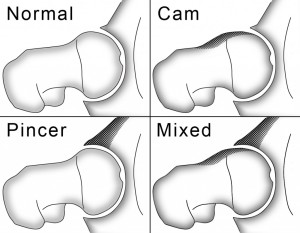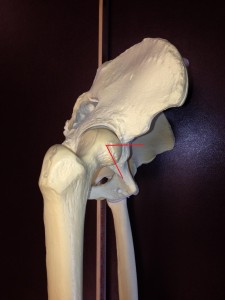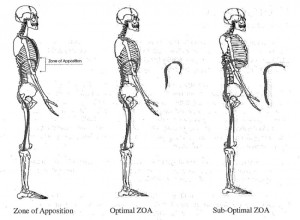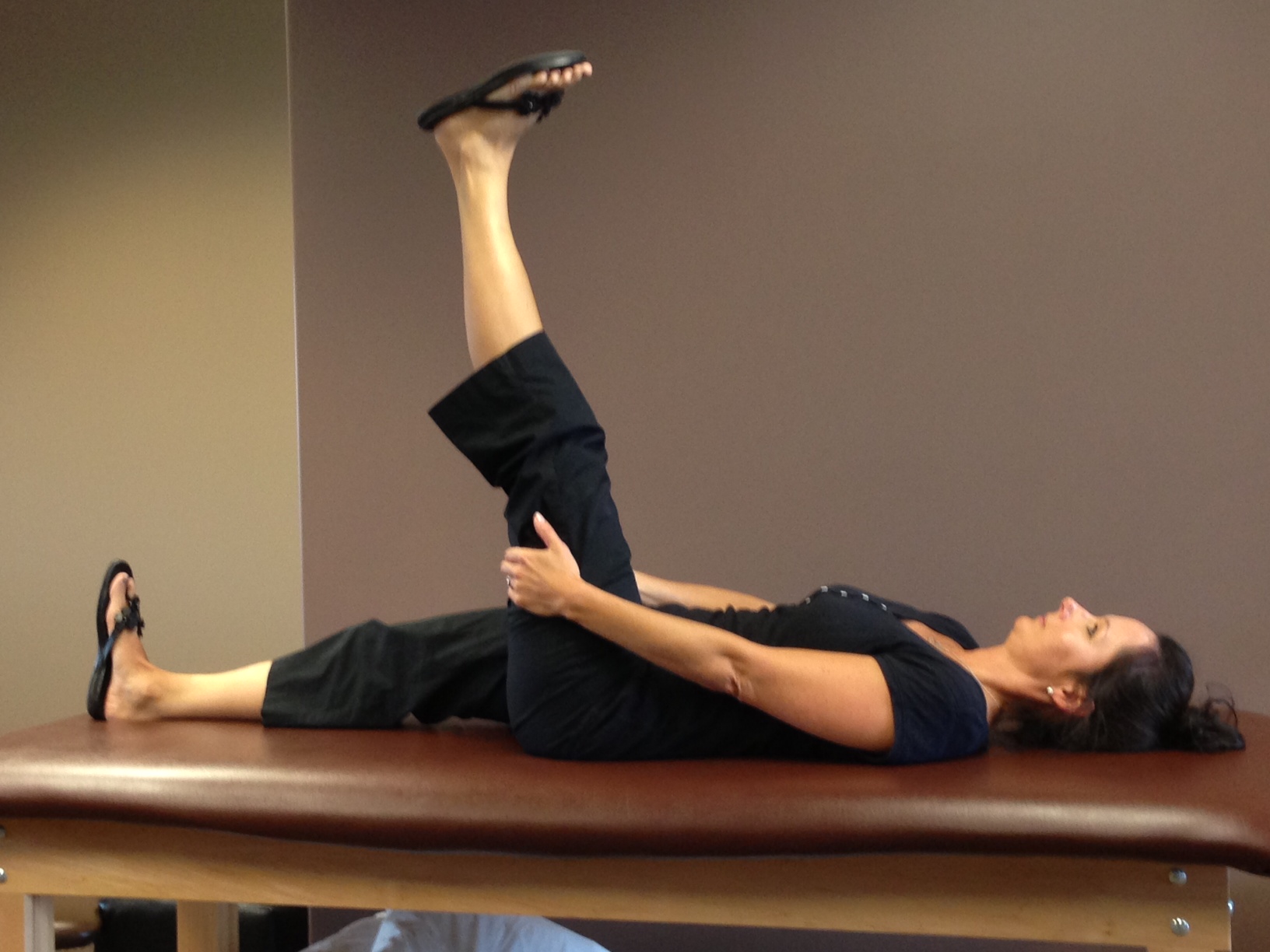The medical term is femoral-acetabular Impingement (FAI) which anatomically describes the location of this pinching syndrome occurring at the hip joint. See illustration. The impingement occurs when the femoral head and the acetabulum rub against one another.
There are three types recognized: cam, pincer or a combination of the two. While childhood hip disorders and previous fractures of the hip and/or pelvis may result in FAI, most cases are considered insidious with an unknown cause. I will attempt to explain these insidious cases. 
In recent years FAI has been recognized more and more often as a source of hip pain. Left untreated, FAI can result in labral tears, chondral injuries, and osteoarthritis. The pain is reproduced near end range hip flexion as the knee approaches the chest. So any activity involving prolonged or repetitive hip flexion may cause impingement. Sports like cycling, hockey, soccer, running and track. The pain is located in the front of the hip or the groin area. Symptoms are again reproduced with knee toward chest movements and often hurts during sitting. While there are very effective surgical procedures, and some patients do require surgery, this article will focus on the physical therapy involved in correcting the faulty biomechanics contributing to the impingement.
Causes
So what really separates those that develop FAI and those that do not when all things seem equal. It’s the posture and alignment that must be considered and addressed. In a “neutral” postural state, there is adequate space at the front of the hip joint and therefore plenty of range of motion to move with. However, when the pelvis tilts anteriorly forward, some of the available ROM is consumed by the position of the pelvis as the head and neck of the femur are now closer to the acetabulum. See photo. During hip flexion activities the head and neck of the femur and the acetabulum of the pelvis are now much more likely to abut one another and obstruct motion. Bony and soft tissues in this area are stressed and compressed. This can result in inflammation, labral tearing and degeneration and perhaps abnormal bone growth(Wolf’s Law). Perhaps chronically functioning in this position contributes to formation of a cam or pincer deformity.
This biochemical issue is a result of suboptimal pelvic position. Position of the pelvis is determined by many factors. The hamstrings are commonly blamed for faulty control of the pelvis and rightly so. Weakness and length of this muscle group determine pelvic position. Due to its attachments, the hamstrings are perfectly situated to control pelvic and hip motion. Weakness can allow the pelvis to tilt forward. Excessively long hamstrings will also allow excessive anterior tilt. (see The Truth about Hamstrings blog). When considering length-tension relationships of muscle, too long is too weak. Abdominals(obliques) play a role from above and when weak or stretched out allow the front of the pelvis to drop. And then the gluteals control things from the back by creating posterior tilt and controlling anterior tilt. Flexibility is the next factor with the hip flexors getting much of the attention. By the nature of the attachment, a short or overactive hip flexor will pull the pelvis forward. A less appreciated yet very important muscle group are the low back extensors. They are almost always involved by being overactive and too tight and if not addressed will result in unresolved impingement. Finally, the respiratory system can have a profound effect on pelvic position and therefore FAI. An inability to fully exhale and rotate the ribcage downward(IR) results in ribs that protrude anteriorly, a diphragm that becomes tight and a spine that becomes too lordotic. As the lordosis increases so does the forward pelvic tilt and risk of impinging.
Postural Restoration
To biomechanically and neurologically change a learned posture, a comprehensive treatment approach is required. Postural Restoration(PRI)is our treatment of choice to treat FAI. This method fully integrates the neuromuscular and respiratory system to ultimately alter strength, ROM, and posture to reduce and eliminate impingement. For example, the hamstrings must be strengthened or trained in a way that does not activate an already overactive and tight back and hip flexor. The hamstrings must be integrated with abdominals, specifically obliques, and glutes to synchronously control the pelvis. Finally, breathing and ribcage flexion(IR) and rotation needs to also be inegrated with the program. For example, exercises that involve complete exhalation will lower the anterior ribs, stretch the diaphragm, activate abdominals, deactivate back and hip flexors and ultimately achieve the neutral pelvis. Whether treating to avoid surgery, or as a post-program, PRI should be the treatment of choice for FAI.








